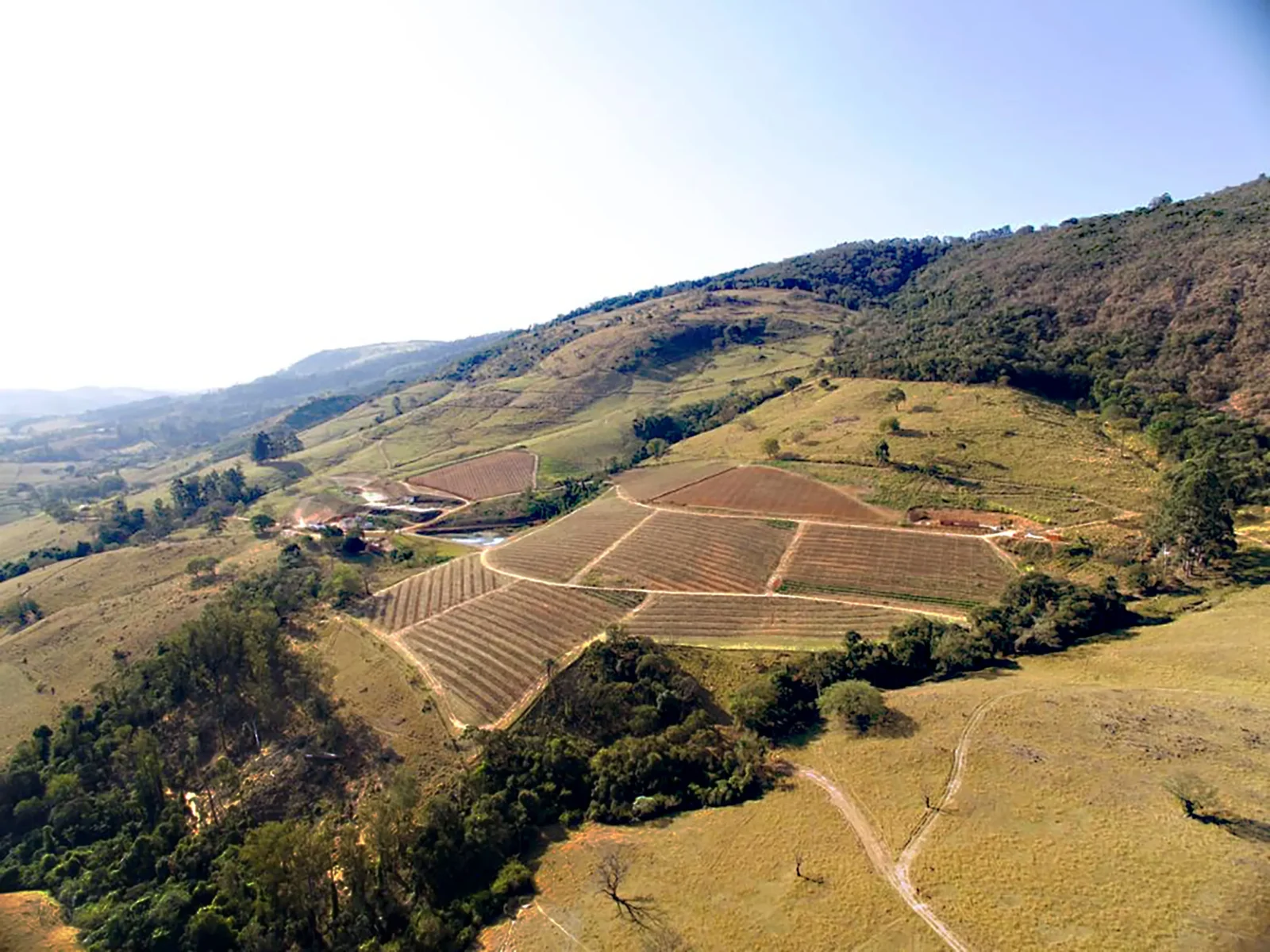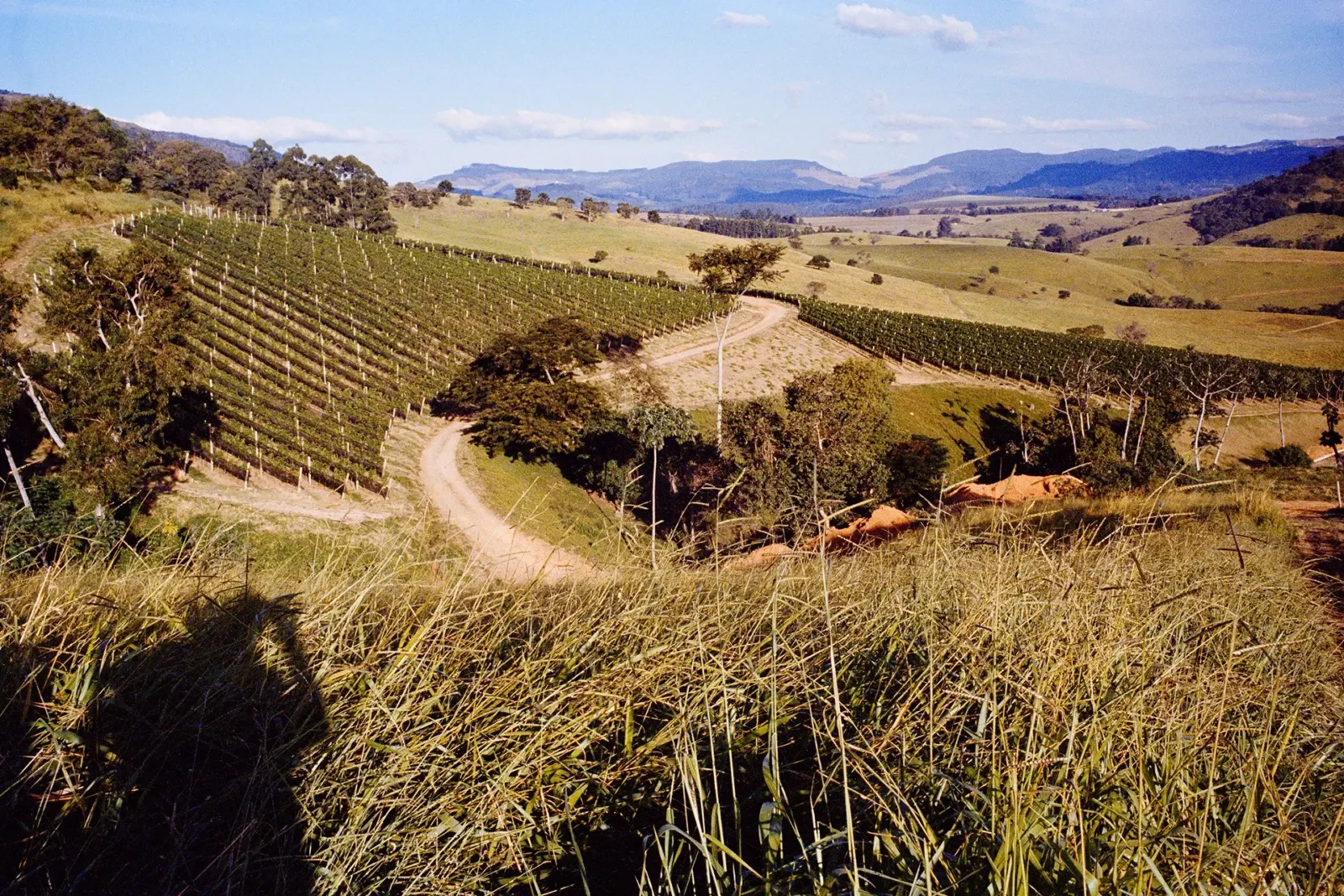


It is not about what we want to produce
But what we eager to share.
An unbelievable dream.
A remarkable wine. Grown with time
at Vale da Grama in Brazil.
It is not about what we want to produce
But what we eager to share.
An unbelievable dream.
A remarkable wine. Grown with time
at Vale da Grama in Brazil.
It is not about what we want to produce
But what we eager to share.
An unbelievable dream.
A remarkable wine. Grown with time
at Vale da Grama in Brazil.
VALE DA GRAMA
Vale da Grama is a valley blessed by Santa Clara Chapel, a project designed by the notorious Brazilian architect Oscar Niemeyer. The valley commences at the crater rim of a volcanic formation that encloses the city of Poços de Caldas and extends towards the municipality of São Sebastião da Grama. We are perched at Serra da Mantiqueira – the mountain that weeps, as named by the Tupi Guarani native people – close to the border of the states of São Paulo and Minas Gerais.
Approximately 30 kilometers long and permeated with estates that produce internationally acclaimed coffee and olive oil, Vale da Grama distinguishes itself by its elevated rugged topography and rocky soil, adorned with granite cliffs disposed in a way as to channel the constant wind that blows from May to August.
Positioned at between 950 and 1300 meters above sea level, Fazenda Santa Maria stands in a unique spot within Vale da Grama. Encircled by a native biome and traversed by the Santo Domingos River, its history traces back to the production of refined coffees. Viticulture was introduced in 2017, now encompassing seven hectares of vineyards, strategically planted in designated parcels carefully chosen after meticulous analysis of soil composition, sunlight exposure, drainage patterns and elevation. Over forty percent of Fazenda Santa Maria’s ground is dedicated to the conservation of untouched native vegetation, housing numerous water springs and wildlife, thereby permitting nature to fulfill its pivotal role in the maturation of the grapevines.
VALE DA GRAMA
Such natural landscape, upon the sunlight hitting the granite rocks, provides for the phenomenon of dawn’s mist and cool breezes even during summer season. Due to the volcanic influence, the earth reveals itself as deep, stony, red and yellow, enriched by mineral materials and clay.
Throughout the winter months, precipitation scarcely exceeds an average of 35 millimeters, accompanied by significant thermal fluctuation of more than 15 degrees Celsius within the same day, with lows ranging between 5 and 8 and highs averaging 24 to 26 degrees Celsius.
CASA TÉS emerges from the combination of such unparalleled terroir with a family’s aspiration to craft an exceptional wine, guided by a vision of purpose and reverence to the environment.